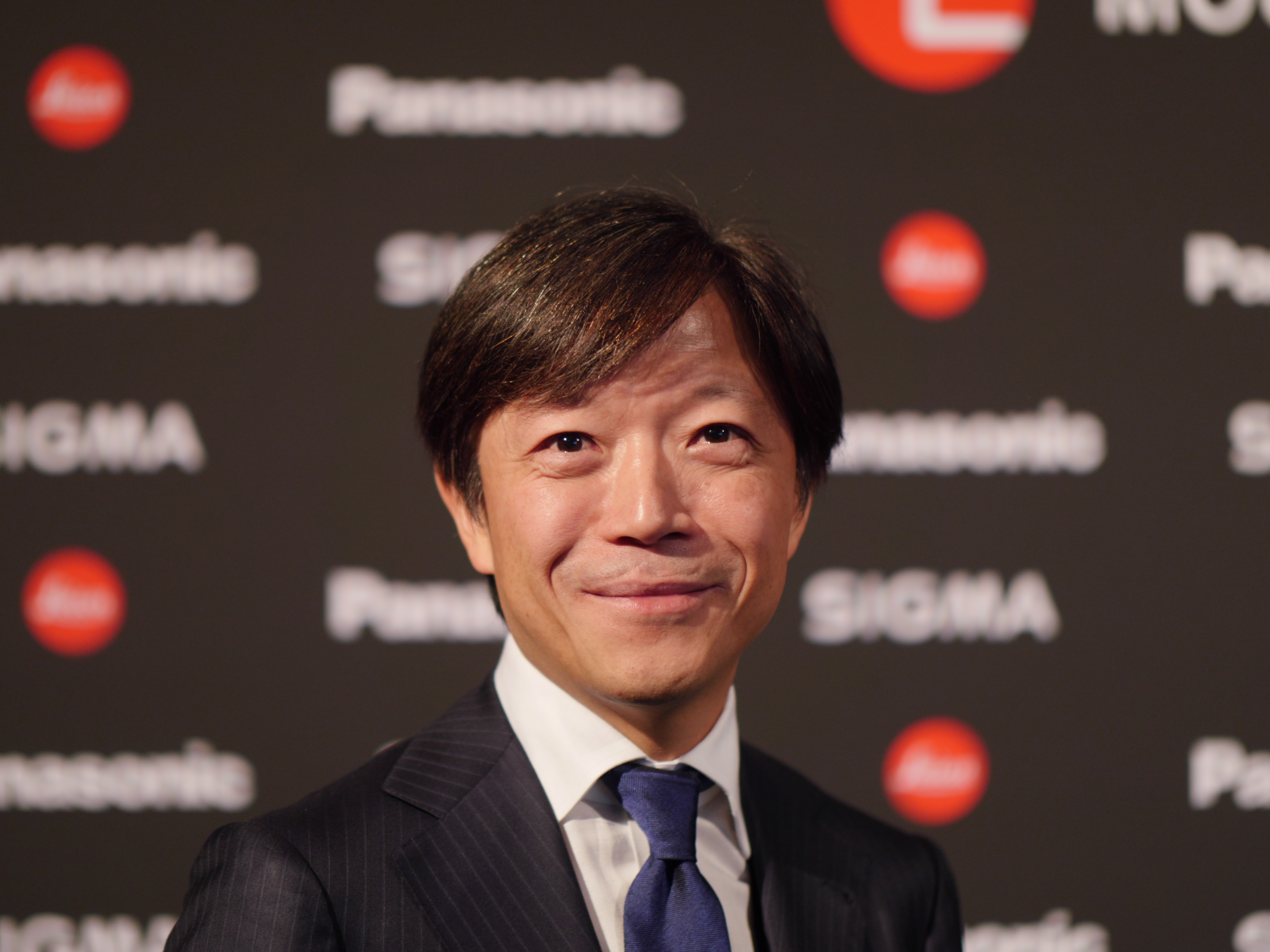|
Sigma 180mm F3.5 EX DG Lens
The Sigma APO 180mm F3.5 EX DG lens was a telephoto/ macro lens produced by Sigma Corporation. It contained two SLD (Special Low Dispersion) glass elements to provide correction for chromatic aberration and was aimed toward advanced consumers. It was designed for use on full frame Digital SLR cameras, but can also be fitted to DSLRs with smaller APS-C size sensors, where it covers a similar field of view to a 270mm lens when fitted to Nikon, Pentax and Sony cameras with 1.5x crop factors or 288mm with Canon DSLRs. It appears to have been replaced by the 150mm F2.8 EX DG HSM Macro lens. The 180mm macro lens has the EX (‘Excellence’) matte finish on the lens barrel and supplied cylindrical hood and comes with the same DG (‘digital’) coatings that minimize the effects of internal reflections off the surface of the sensor. It’s significantly larger than the 105mm lens and has some features that lens lacks. The lens came with a 90 mm long cylindrical lens hood attached ... [...More Info...] [...Related Items...] OR: [Wikipedia] [Google] [Baidu] |
Sigma Corporation
is a Japanese company, manufacturing cameras, lenses, flashes and other photographic accessories. All Sigma products are produced in the company's own Aizu factory in Bandai, Fukushima, Japan. Although Sigma produces several camera models, the company is best known for producing high-quality lenses and other accessories that are compatible with the cameras produced by other companies. The company was founded in 1961 by Michihiro Yamaki, who was Sigma's CEO until his death at age 78 in 2012. Sigma products work with cameras from Canon, Nikon, Pentax, Sony, Olympus and Panasonic, as well as their own cameras. Sigma has also made lenses under the Quantaray name, which have been sold exclusively by Ritz Camera. Similarly, Sigma lenses were sold exclusively by the former Wolf Camera, but following the merger of Wolf and Ritz, both brands can be purchased. Sigma's digital SLRs, the SD9, SD10, SD14 and SD15, plus the latest SD1 are unusual in their use of the Foveon X3 ... [...More Info...] [...Related Items...] OR: [Wikipedia] [Google] [Baidu] |
Telephoto Lens
A telephoto lens, in photography and cinematography, is a specific type of a long-focus lens in which the physical length of the lens is shorter than the focal length. This is achieved by incorporating a special lens group known as a ''telephoto group'' that extends the light path to create a long-focus lens in a much shorter overall design. The angle of view and other effects of long-focus lenses are the same for telephoto lenses of the same specified focal length. Long-focal-length lenses are often informally referred to as ''telephoto lenses'', although this is technically incorrect: a telephoto lens specifically incorporates the telephoto group. Telephoto lenses are sometimes broken into the further sub-types of short telephoto (85–135 mm in 35 mm film format), medium telephoto: (135–300 mm in 35 mm film format) and super telephoto (over 300 mm in 35 mm film format) . Construction In contrast to a telephoto lens, for any given focal len ... [...More Info...] [...Related Items...] OR: [Wikipedia] [Google] [Baidu] |
Macro Lens
Macro photography (or photomacrography or macrography, and sometimes macrophotography) is extreme close-up photography, usually of very small subjects and living organisms like insects, in which the size of the subject in the photograph is greater than life size (though ''macrophotography'' also refers to the art of making very large photographs). By the original definition, a macro photograph is one in which the size of the subject on the negative or image sensor is life size or greater. In some senses, however, it refers to a finished photograph of a subject that is greater than life size. The ratio of the subject size on the film plane (or sensor plane) to the actual subject size is known as the reproduction ratio. Likewise, a macro lens is classically a lens capable of reproduction ratios of at least 1:1, although it often refers to any lens with a large reproduction ratio, despite rarely exceeding 1:1. Apart from technical photography and film-based processes, where the s ... [...More Info...] [...Related Items...] OR: [Wikipedia] [Google] [Baidu] |
Telephoto Lens
A telephoto lens, in photography and cinematography, is a specific type of a long-focus lens in which the physical length of the lens is shorter than the focal length. This is achieved by incorporating a special lens group known as a ''telephoto group'' that extends the light path to create a long-focus lens in a much shorter overall design. The angle of view and other effects of long-focus lenses are the same for telephoto lenses of the same specified focal length. Long-focal-length lenses are often informally referred to as ''telephoto lenses'', although this is technically incorrect: a telephoto lens specifically incorporates the telephoto group. Telephoto lenses are sometimes broken into the further sub-types of short telephoto (85–135 mm in 35 mm film format), medium telephoto: (135–300 mm in 35 mm film format) and super telephoto (over 300 mm in 35 mm film format) . Construction In contrast to a telephoto lens, for any given focal len ... [...More Info...] [...Related Items...] OR: [Wikipedia] [Google] [Baidu] |
SLD Glass
Low-dispersion glass (LD glass) is a type of glass with a reduction in chromatic aberration (less rainbow effect). Crown glass is an example of a relatively inexpensive low-dispersion glass. ''Special low dispersion glass'' (SLD glass) and ''extraordinary low-dispersion glass'' (ELD glass) are glasses with yet lower dispersion (and yet higher price). Other glasses in this class are ''extra-low-dispersion glass'' (ED glass), and ''ultra-low-dispersion glass'' (UL glass). Application Low-dispersion glasses are particularly used to reduce chromatic aberration, most often used in achromatic doublets. The positive element is made of a low-dispersion glass, the negative element from a high-dispersion glass. To counteract the effect of the negative lens, the positive lens has to be thicker. Achromatic doublets therefore have higher thickness and weight than the equivalent non-chromatic-corrected single lenses. In comparison to telephoto lenses, shorter focal length objectives benefit le ... [...More Info...] [...Related Items...] OR: [Wikipedia] [Google] [Baidu] |
Consumer
A consumer is a person or a group who intends to order, or uses purchased goods, products, or services primarily for personal, social, family, household and similar needs, who is not directly related to entrepreneurial or business activities. The term most commonly refers to a person who purchases goods and services for personal use. Consumer rights “Consumers, by definition, include us all," said President John F. Kennedy, offering his definition to the United States Congress on March 15, 1962. This speech became the basis for the creation of World Consumer Rights Day, now celebrated on March 15. In his speech : John Fitzgerald Kennedy outlined the integral responsibility to consumers from their respective governments to help exercise consumers' rights, including: *The right to safety: To be protected against the marketing of goods that are hazardous to health or life. *The right to be informed: To be protected against fraudulent, deceitful, or grossly misleading informatio ... [...More Info...] [...Related Items...] OR: [Wikipedia] [Google] [Baidu] |
Digital Single-lens Reflex Camera
A digital single-lens reflex camera (digital SLR or DSLR) is a digital camera that combines the optics and the mechanisms of a single-lens reflex camera with a digital imaging sensor. The reflex design scheme is the primary difference between a DSLR and other digital cameras. In the reflex design, light travels through the lens and then to a mirror that alternates to send the image to either a prism, which shows the image in the viewfinder, or the image sensor when the shutter release button is pressed. The viewfinder of a DSLR presents an image that will not differ substantially from what is captured by the camera's sensor as it presents it as a direct optical view through the main camera lens, rather than showing an image through a separate secondary lens. DSLRs largely replaced film-based SLRs during the 2000s. Major camera manufacturers began to transition their product lines away from DSLR cameras to mirrorless interchangeable-lens cameras (MILC) beginning in the 2010s ... [...More Info...] [...Related Items...] OR: [Wikipedia] [Google] [Baidu] |
List Of Nikon Compatible Lenses With Integrated Autofocus-motor
The following list of Nikon F-mount lenses with integrated autofocus motor includes only Nikon F-mount lenses which fully autofocus in all modes of all Nikon F-mount digital single-lens reflex cameras with and also ''without'' an autofocus motor. Cameras lacking an integrated autofocus motor are the Nikon D40, D40X, D60, Nikon D3xxx series (the latest model of which is the D3500), Nikon D5xxx series (the latest model of which is the D5600) and all Nikon 1 series cameras with FT1 adapter. Fully supporting these cameras all AF-S (introduced 1996), AF-P (introduced 2015), and the older AF-I (introduced 1992) Nikon Nikkor lenses are clearly designated including the necessary autofocus motor. Other manufacturers have different or ''no designations'' for lenses including a focus motor. All here not listed AF lenses without an autofocus motor do work fully, but lack autofocus-function on these cameras. Instead an electronic rangefinder can be used to find focus. Additionally all len ... [...More Info...] [...Related Items...] OR: [Wikipedia] [Google] [Baidu] |
Sigma Lenses
Sigma (; uppercase Σ, lowercase σ, lowercase in word-final position ς; grc-gre, σίγμα) is the eighteenth letter of the Greek alphabet. In the system of Greek numerals, it has a value of 200. In general mathematics, uppercase Σ is used as an operator for summation. When used at the end of a letter-case word (one that does not use all caps), the final form (ς) is used. In ' (Odysseus), for example, the two lowercase sigmas (σ) in the center of the name are distinct from the word-final sigma (ς) at the end. The Latin letter S derives from sigma while the Cyrillic letter Es derives from a lunate form of this letter. History The shape (Σς) and alphabetic position of sigma is derived from the Phoenician letter ( ''shin''). Sigma's original name may have been ''san'', but due to the complicated early history of the Greek epichoric alphabets, ''san'' came to be identified as a separate letter in the Greek alphabet, represented as Ϻ. Herodotus reports that "san" ... [...More Info...] [...Related Items...] OR: [Wikipedia] [Google] [Baidu] |



_(14597240757).jpg)

